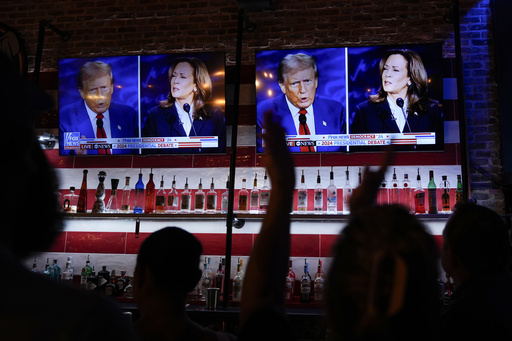NEW YORK — As news organizations gear up for election night, they are not only focused on the events that unfold but also on what may arise in terms of misinformation. With polling day on November 5 approaching, various newsrooms are implementing strategies to address potential falsehoods. The Associated Press is among the outlets that will clarify its coverage methodologies, while The New York Times has assigned journalists to monitor the Internet for any emerging conspiracy theories. NPR has dedicated personnel to investigate misinformation propagated by artificial intelligence, and ABC News has adopted a strategy of “pre-bunking” to prepare their audience.
The recent spread of inaccurate narratives following Hurricane Helene serves as a cautionary tale on how swiftly misinformation can proliferate. Julie Pace, executive editor and senior vice president at the Associated Press, voiced her concerns about the rapidity of misinformation’s spread and the limited ability of news organizations to control it. “Our goal is to fill the media space with reliable, fact-based information, ensuring that it competes with the spread of misinformation,” Pace noted.
On election night, the AP will be tasked with tallying results from numerous elections nationwide and making informed decisions on winners and losers based on raw data, polling statistics, and historical trends. Throughout the campaign, they have showcased the processes behind these determinations, and on election night, they will detail the rationale for their calls in the presidential race.
As other media organizations follow suit, they are also alerting the public when it’s premature to make conclusions. “Radical transparency is my motto for election night,” said Rick Klein, ABC News’ Washington bureau chief. News outlets are committed to ensuring that their viewers are well prepared.
The New York Times will reinstate its much-discussed election night feature known as “The Needle,” which fluctuates throughout the evening to indicate the changing probabilities of victory for presidential candidates. According to assistant managing editor Matthew Ericson, there will be more detailed explanations accompanying the shifts this year. Dedicated reporters will monitor the Internet for conspiracy theories in real-time, striving to debunk them swiftly.
Efforts to track misinformation have become a regular part of this election cycle, as seen with accusations against Democratic vice presidential candidate Tim Walz that intelligence officials associate with Russian disinformation. After Hurricane Helene, various false narratives emerged regarding weather manipulation and financial support biased against Republican areas.
Meanwhile, NBC News has established a Vote Watch team to oversee misinformation on Election Day. Thirty reporters will act as “county captains” in regions where elections are expected to be closely contested. PBS is collaborating with the PolitiFact fact-checking team during the election night coverage.
As they monitor the situation, journalists face the challenging task of determining whether a misinformation narrative is gaining enough traction to warrant intervention. According to Tim Richardson, director of the journalism and misinformation program at PEN America, if a theory only circulates on niche platforms, it may be best to leave it unaddressed. However, if it becomes popular enough to engage the public’s attention, it’s critical to counteract it.
Election periods marked by uncertainty can be particularly susceptible to misinformation. “I’m concerned about bad actors filling the void left by confusion,” Richardson remarked. In the aftermath of the 2020 election, when media outlets delayed calling Joe Biden as the winner until the Saturday following Election Day, former President Donald Trump’s allegations of fraud began to gain ground, exploiting public uncertainty.
Journalists must be prepared to act quickly if similar episodes unfold this year, whether they arise in public addresses or during interviews. ABC News is already running a “Protecting Your Vote” series, highlighting various falsehoods likely to resurface as Election Day approaches, including the misconception that a surge of noncitizen voters will appear. In parallel, Scott Pelley on CBS’ “60 Minutes” and Laura Barron-Lopez on PBS’ “NewsHour” have comprehensively reported on the spread of false claims regarding election fraud in Arizona.
The approach to election night coverage is evolving, as the stakes of misinformation have escalated in recent years. Eric Marrapodi, vice president for news programming at NPR, indicated that their disinformation team is exploring various angles to understand the complexities, including issues stemming from artificial intelligence and foreign influence. While NPR’s election night broadcast will air from 7 p.m. to 3 a.m. Eastern Time, the network traditionally garners higher listenership the following morning.
“We have to ensure a rigorous verification process for every piece of information,” Marrapodi emphasized. As news organizations brace for this new, formidable responsibility, they recognize the significant burden placed on them amidst the challenges posed by rampant misinformation. Carrie Budoff Brown, senior vice president for politics at NBC News, emphasized that getting the facts right is paramount on one of the most critical nights for providing reliable information.
Richardson expressed uncertainty about the future of information dissemination, acknowledging that the media landscape may be navigating uncharted waters. Yet, he remains hopeful that journalists will be well-equipped to handle the complexities that lie ahead.


